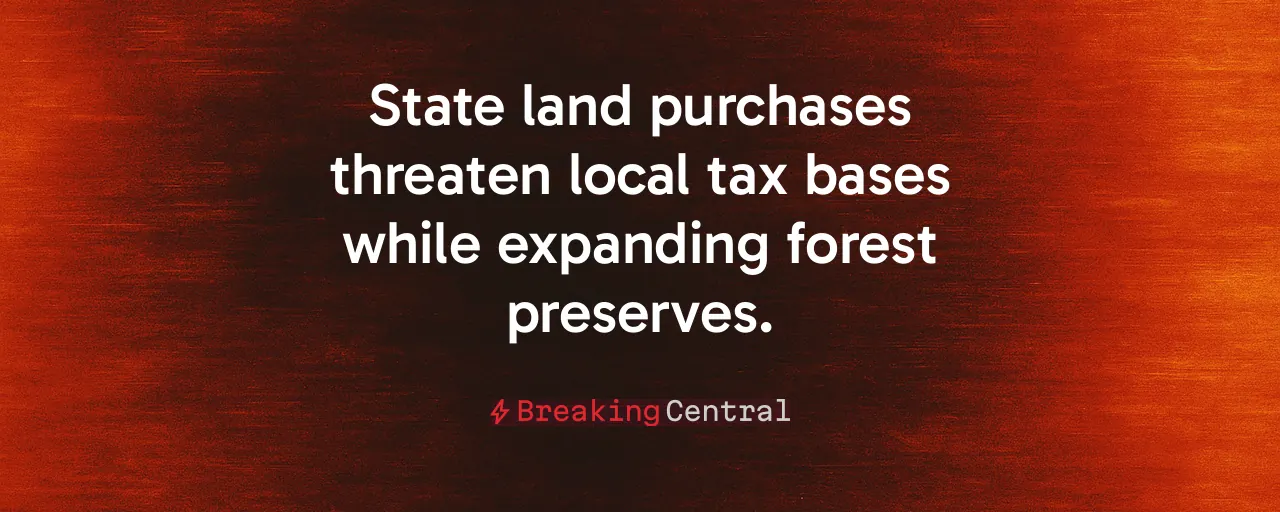A Bold Move in the Catskills
New York State's recent acquisition of 900 acres in Ulster County's Town of Olive marks the largest addition to the Catskill Forest Preserve since 2011. Governor Kathy Hochul hailed the $4.2 million purchase as a win for recreation and water quality, funded by the 2022 Clean Water, Clean Air, and Green Jobs Environmental Bond Act. Alongside this, upgrades at the Peekamoose Blue Hole, including a new parking lot and accessible trail, aim to manage surging crowds. These moves promise ecological protection and visitor safety, but they come with hidden costs that demand scrutiny.
The state's growing land portfolio, now including pristine tracts near the Ashokan Reservoir, raises questions about who pays and who benefits. Local governments, already stretched thin, face shrinking tax bases as private land becomes untaxable state property. Meanwhile, new permit requirements at Peekamoose restrict spontaneous outdoor access, a move that feels heavy-handed to many New Yorkers who cherish their forests as places of freedom. These developments signal a broader trend of state overreach that warrants a closer look.
Tax Revenue Takes a Hit
When New York buys land, it pulls acres off local tax rolls forever. The Olive purchase, while preserving scenic views and watershed purity, deprives Ulster County of property tax revenue that funds schools, roads, and emergency services. The Department of Environmental Conservation offers payments in lieu of taxes, but these often fall short of what private landowners would contribute. Historical data from past Catskill acquisitions shows municipalities struggling to bridge the gap, with some raising local taxes to compensate.
Permits Stifle Outdoor Freedom
At Peekamoose Blue Hole, new rules require permits from May to September, a response to crowds that have overwhelmed the site. Visitation has skyrocketed past 20,000 annually, causing erosion and litter. The state's solution, including a new trail and parking lot, aims to protect the fragile riparian corridor. Many who see the Catskills as a refuge for unscripted adventure find mandating permits a step too far. The requirement, accessible only online, risks excluding those without reliable internet or the means to plan ahead.
Similar permit systems in the Adirondacks have faced pushback, with critics arguing they infringe on equal access to public lands. Legal challenges there highlight a core tension: balancing ecological protection with individual rights. New York's constitution guarantees the Forest Preserve as 'forever wild,' a promise challenged when bureaucratic hurdles limit who can enjoy it. A voluntary code of conduct or better signage could achieve similar goals without the heavy hand of state control.
A Pattern of State Overreach
The Catskill expansion fits a broader pattern of state-driven land grabs that prioritize Albany's agenda over local needs. The '30 x 30' initiative, aiming to protect 30 percent of New York's lands and waters by 2030, echoes federal policies that have long sparked distrust among rural communities. While clean water and biodiversity matter, the state's approach often sidelines the people who live closest to these lands. Ulster County residents, for instance, had little say in the Olive acquisition, despite its direct impact on their tax base and way of life.
Smarter Solutions Exist
There's a better way to protect the Catskills without sacrificing local prosperity or personal freedom. Conservation easements, which keep land private while restricting development, preserve tax revenue and allow landowners to maintain stewardship. Public-private partnerships, like those pioneered in other states, could fund trail maintenance and visitor education through user fees or corporate sponsorships, easing the burden on taxpayers. These approaches respect property rights and local economies while still safeguarding watersheds and wildlife.
Looking Ahead
New York's Catskill Forest Preserve is a treasure, but its future hinges on balancing protection with practicality. The Olive land purchase and Peekamoose upgrades reflect a well-intentioned push for conservation, carrying costs that hit local towns and taxpayers hardest. By prioritizing state control over collaborative stewardship, Albany risks alienating the people who know these lands best. A course correction is needed to ensure the Catskills remain a place of natural beauty and accessible adventure.
Communities like Ulster County deserve a voice in decisions that reshape their economic and cultural landscape. Smarter policies, rooted in local input and fiscal restraint, can protect the Ashokan watershed and Peekamoose's fragile ecosystem without eroding freedoms or burdening future generations. The path forward involves trusting New Yorkers to care for their lands, which avoids expanding state power at their expense.
As the state moves toward its '30 x 30' goal, it would benefit from the lessons of the Catskills. Conservation works best when it fosters unity, avoiding division. By embracing innovative partnerships and respecting local realities, New York can preserve its natural legacy while honoring the principles of freedom, accountability, and community that define its people.
